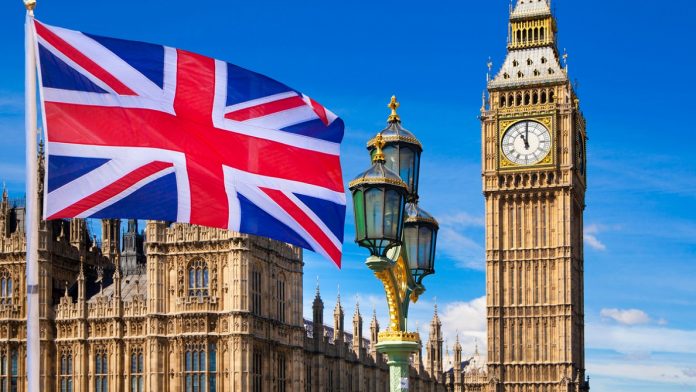Brexit, UK recession fears and election speculation sent the pound tumbling on Monday, whist the dollar rallied despite the US public holiday. The pound US dollar sunk to a low of US$1.2036, its weakest level in two weeks. The pair continued to fall in early trade on Tuesday.
| What do these figures mean? |
| When measuring the value of a pair of currencies, one set equals 1 unit and the other shows the current equivalent. As the market moves, the amount will vary from minute to minute.
For example, it could be written: 1 GBP = 1.28934 USD Here, £1 is equivalent to approximately $1.29. This specifically measures the pound’s worth against the dollar. If the US dollar amount increases in this pairing, it’s positive for the pound. Or, if you were looking at it the other way around: 1 USD = 0.77786 GBP In this example, $1 is equivalent to approximately £0.78. This measures the US dollar’s worth versus the British pound. If the sterling number gets larger, it’s good news for the dollar. |
Brexit fears dented demand for the pound in the previous session sending it sharply lower across the board. Whilst Boris Johnson sent a warning shot to rebel MP’S that under no circumstances was he willing to delay Brexit, data also showed the damage that the prospects of a no deal Brexit were having on the economy.
Data showed that the UK manufacturing sector contracted further in August. The manufacturing pmi report, which is closely watched by market participants, the Bank of England and the Treasury showed that manufacturing activity recorded the sharpest drop in 7 years amid growing concerns of a no deal Brexit and the slowing global economy.
The report found that some EU customers were shunning British manufacturers and re-routing their supply chain away from the UK amid fears of a disorderly Brexit. At the same time orders from the US and Asia have declined as the world economy has slowed. This shows the challenging climate within which Britain will need to strike new trade deals outside of the EU.
Today Brexit headlines will remain very much in focus. Boris Johnson has threatened a general election on 14th October should he lose a crucial vote over no deal Brexit. The instability is weighing on demand for the pound.
| Why is a “soft” Brexit better for sterling than a “hard” Brexit? |
| A soft Brexit implies anything less than UK’s complete withdrawal from the EU. For example, it could mean the UK retains some form of membership to the European Union single market in exchange for some free movement of people, i.e. immigration. This is considered more positive than a “hard” Brexit, which is a full severance from the EU. The reason “soft” is considered more pound-friendly is because the economic impact would be lower. If there is less negative impact on the economy, foreign investors will continue to invest in the UK. As investment requires local currency, this increased demand for the pound then boosts its value. |
US manufacturing Data Under The Spotlight
The dollar advanced at the start of the week despite, the US being closed for Labour Day public holiday. With no high impacting US data released, the focus remained firmly on the US -Sino trade war developments. As the new tariffs come into force, US and Chinese officials struggle to agree on a schedule for a planned meeting this month to continue trade talks. The two powers are sending signals that this dispute is not going to be resolved quickly or soon. Investors bought into the dollar for its safe haven properties, pushing the greenback higher.
Today trade dispute headlines will remain in focus, in addition to US manufacturing data. Further signs the ongoing trade dispute is negatively impacting the US economy could send the dollar lower as investors will reassess the probability of an interest rate cut by the Federal Reserve, to support the economy.
| Why do interest rate cuts drag on a currency’s value? |
| Interest rates are key to understanding exchange rate movements. Those who have large sums of money to invest want the highest return on their investments. Lower interest rate environments tend to offer lower yields. So, if the interest rate or at least the interest rate expectation of a country is relatively lower compared to another, then foreign investors look to pull their capital out and invest elsewhere. Large corporations and investors sell out of local currency to invest elsewhere. More local currency is available as the demand of that currency declines, dragging the value lower. |
Currencylive.com is a site operated by TransferWise Inc. (“We”, “Us”), a Delaware Corporation.
The content on our site is provided for general information only. It is not intended to amount to advice on which you should rely. You must obtain professional or specialist advice before taking, or retain from, any action on the basis of the content on our site.
Although we make reasonable efforts to update the information on our site, we make no representations, warranties or guarantees, whether express or implied, that the content on our site is accurate, complete or up to date. Some of the content posted on this site has been commissioned by Us, but is the work of independent contractors. These contractors are not employees, workers, agents or partners of TransferWise and they do not hold themselves out as one. The information and content posted by these independent contractors have not been verified or approved by Us. The views expressed by these independent contractors on currencylive.com do not represent our views.





